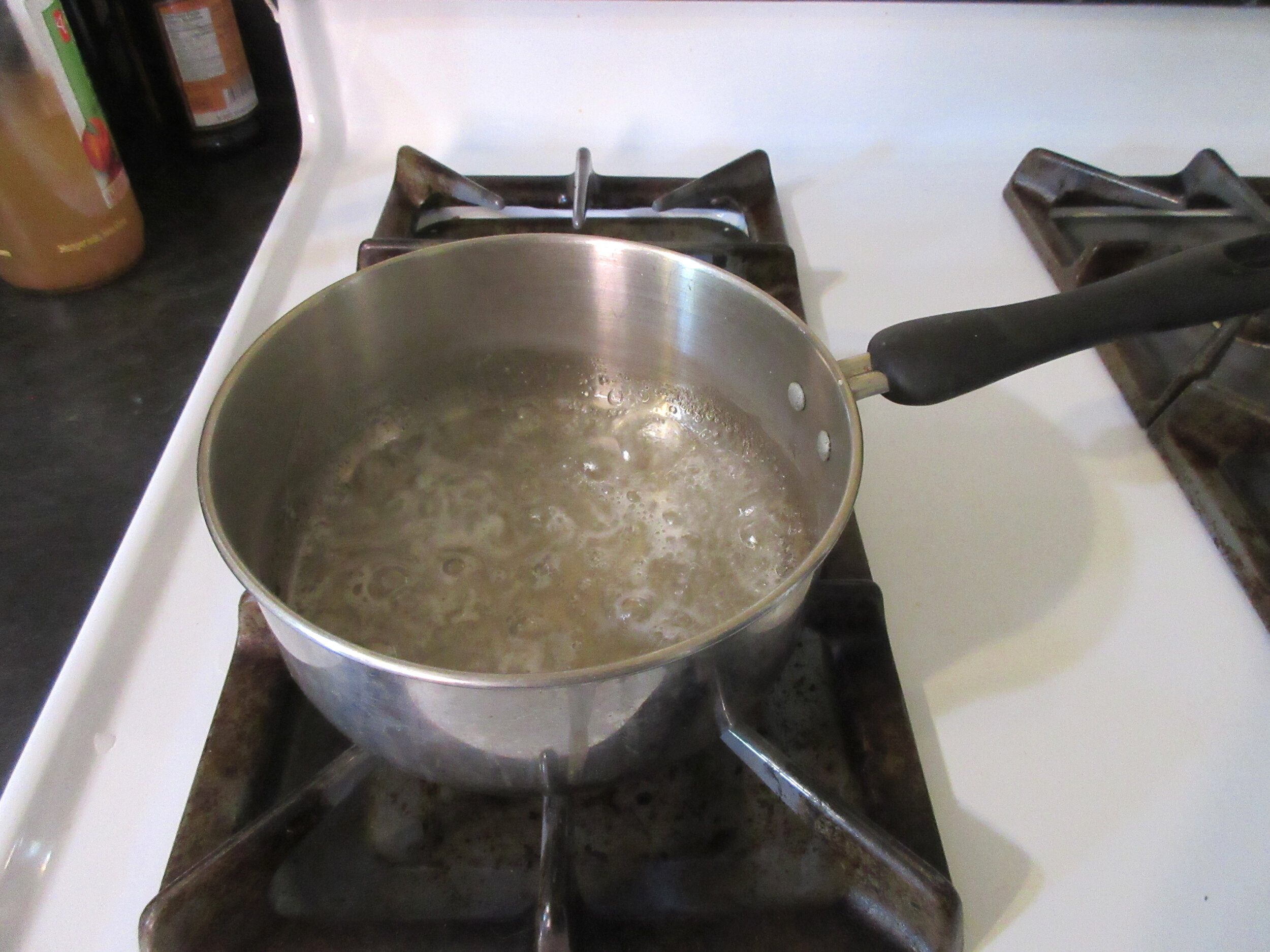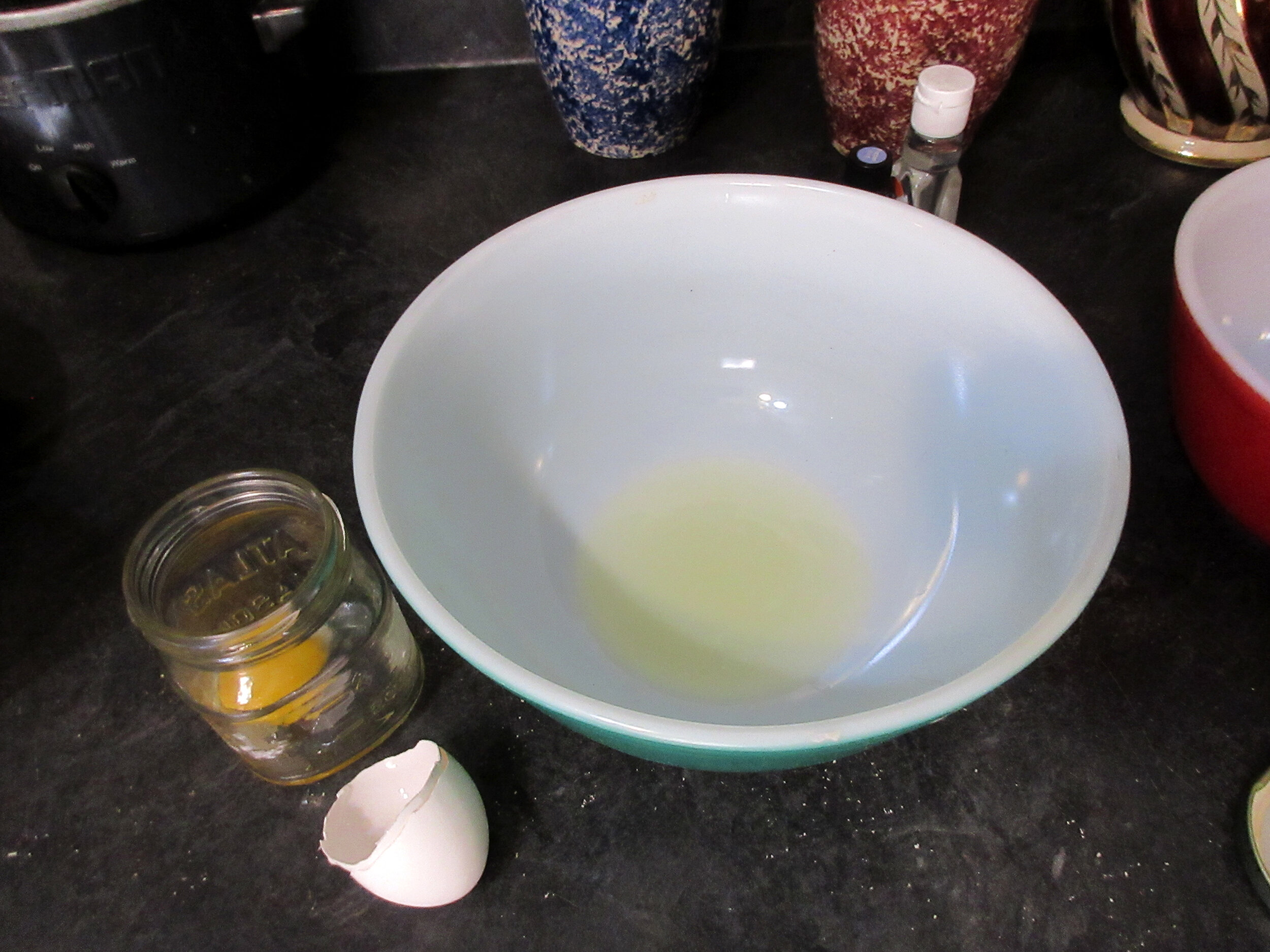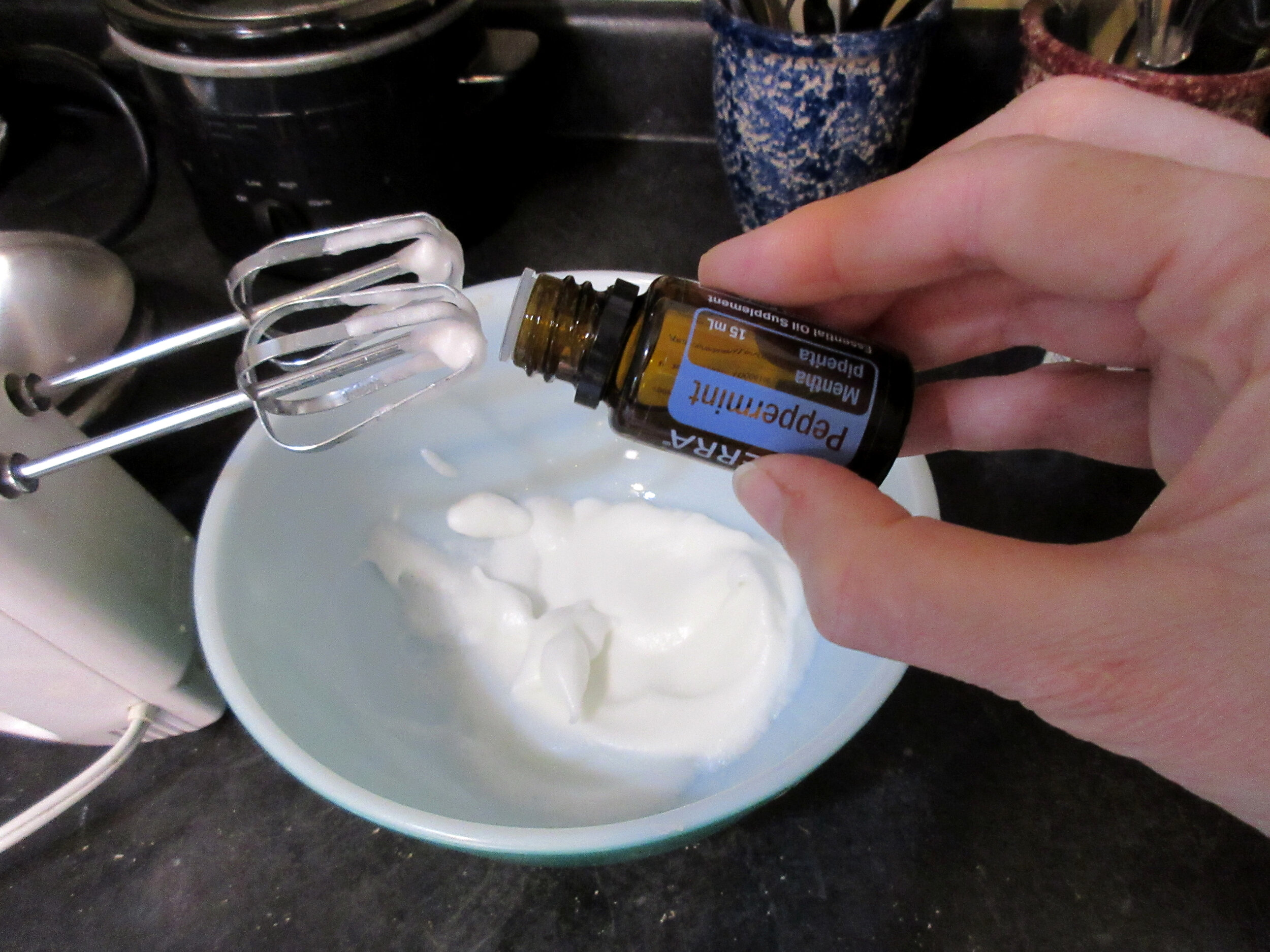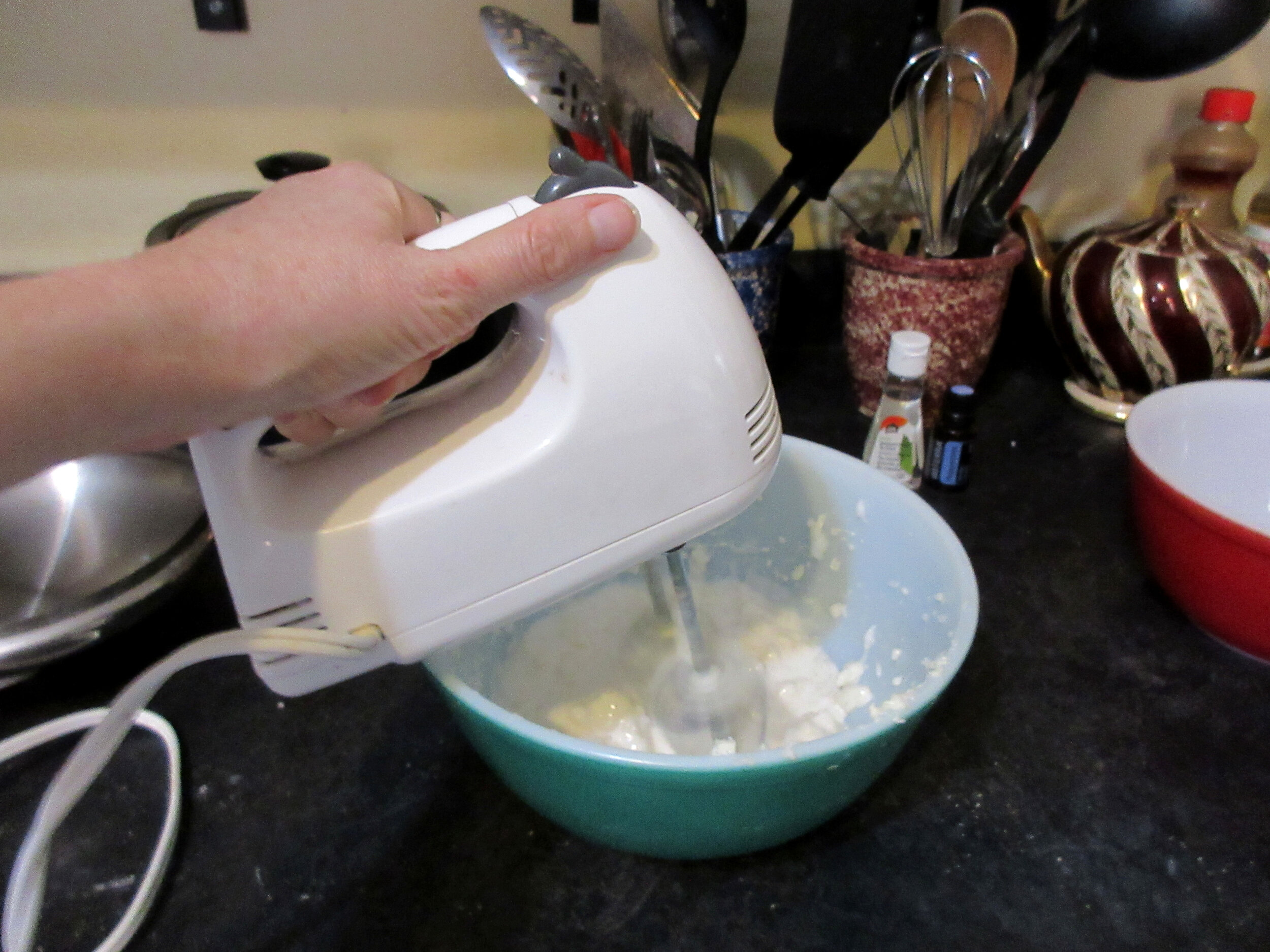Marshmallow Mint Sauce
/You’ll find this recipe in:
Electric Refrigerator Recipes and Menus:
Recipes prepared especially for the General Electric Refrigerator
By: Miss Alice Bradley
Cleveland, 1927
Marshmallow Mint Sauce is delicious served on top of Chocolate Mousse
Historic Recipe:
Marshmallow Mint Sauce – No. 63
Put
½ cup sugar and
¼ cup water in saucepan and boil 5 minutes. Add
8 marshmallows cut in pieces. Let stand 2 minutes
away from the fire and pour slowly over
1 egg white beaten stiff, continuing the beating. Flavor
with
1 drop oil of peppermint or with
½ teaspoon peppermint extract. Serve with
Chocolate Mousse – No. 40.







My thoughts on the recipe:
First of all, here’s some alternative measurements:
½ cup sugar = 100 g
¼ cup water = 60 mL
If you only have mini marshmallows like me, 8 large marshmallows is equal to 1 cup or 60 g of mini marshmallows
***It’s important to stress that most essential oils on the market today are not safe to put in food because of the adulteration and contamination that are prevalent in this industry. For this reason, I’ll always suggest a food-safe substitute ingredient for the essential oil, like extract. Please look out for your safety and don’t use any old bottle of essential oil in the recipes on this blog! The brand that I use is doTERRA essential oils, which has extremely high standards for testing and purity, meaning that doTERRA essential oils can be safely used to flavour food.
Pop over here for more information about doTERRA & adulteration in the essential oil industry and if in doubt, use Peppermint extract in this recipe.
Images above: Peppermint essential oil & Peppermint extract; an illustration from the Ice Cream Sauces chapter of Electric Refrigerator Recipes and Menus
Marshmallow Mint Sauce is found in the Ice Cream Sauces chapter of the 1929 cookbook Electric Refrigerator Recipes and Menus, which contained “Recipes prepared especially for the General Electric Refrigerator”. It’s a gooey, refreshing and flavourful dessert sauce that pairs wonderfully with the Chocolate Mousse recipe from the same cookbook. It has a very sweet and candy-like flavour that I really enjoyed despite not having much of a sweet tooth.
I’m making three recipes from Electric Refrigerator Recipes and Menus in quick succession: Chocolate Mousse and two minty options for toppings, Peppermint Whipped Cream and the Marshmallow Mint Sauce recipe featured in this post.
Keep reading to discover more about the history of the Marshmallow and the roots of some popular marshmallow recipes. Head over to Peppermint Whipped Cream to learn some more history about the General Electric Monitor Top Refrigerator and go to Chocolate Mousse to find out what a refrigerator pan is and read all about the 2013 baker’s chocolate square resizing fiasco.
Images Above: Marsh Mallow Plant illustration from the 1833 book Flore médicale, courtesy of the Biodiversity Heritage Library; Angelus Marshmallow advertisement, circa 1917. The “free recipe book of delightful salads and desserts” mentioned in the ad contains the first recipe for Sweet Potato Casserole with a marshmallow topping.
The mushy history of marshmallows
A Marshmallow is a fluffy and gooey white candy tube, but a Marsh Mallow is a plant. Althaea officinalis is a tall plant with light pink flowers in the mallow family and it grows in...you guessed it...marshy areas. The roots and stem of the marsh mallow contain a thick, white & sticky substance that is high in starches, mucilage and pectin.
The Ancient Egyptians were the first to record eating marsh mallow. As early as 2000 BCE, they created a treat with marsh mallow root and honey that was served only to the high echelons of society. In many areas of the world, the root, stem, leaves and flowers of the marsh mallow plant have been used for medicinal benefits, from healing wounds, reducing swelling, calming digestive upset, curing tooth aches to soothing sore throats and coughs.
It wasn’t until the mid-1700s in France that confectioners started to make pâté de guimauve, which bears a resemblance to our marshmallows of today. Dried marsh mallow root was whipped with sugar, egg whites and flavouring to create a fluffy and sweet lozenge created to soothe sore throats. Between a long drying time and shaping each piece by hand, making pâté de guimauve wasn’t a speedy process. Gum arabic began to be commonly added to pâté de guimauve to provide additional stability to the recipe. After the advent of powdered gelatins in the 1845, it became common to use gelatin instead of the marsh mallow root, which cut down on the required drying time and was cheaper and easier to procure.
In 1895, Joseph B. Demerath began producing marshmallows on a commercial scale in Rochester, New York at the aptly named Rochester Marshmallow Works. Soon other companies began producing marshmallows as well, but these early mass-produced marshmallows were mainly square or rectangular like the marshmallows in the Angelus Marshmallows advertisement above.
In a quest to boost sales by promoting the marshmallow as an ingredient and not just a candy, Angelus Marshmallows put out a recipe booklet in 1917 that included an American Thanksgiving classic recipe for the first time: Sweet Potato Casserole featuring a marshmallow topping. In the advertisement up above, Angelus Marshmallows are touted as being as Pure as a Ray of Sunshine and consumers are encouraged to “Send for our free recipe book of delightful salads and desserts, edited by Janet McKenzie Hill”.
The Campfire brand of marshmallows was launched in 1917 and two years later, the company changed the shape of their product to the rounded short tube similar to what we’re used to today. Campfire Marshmallows also introduced a larger package size at the same time to further incentivize housewives to use marshmallows in their recipes. You can see both of these changes in the illustration down below. Campfire Marshmallows put out a variety of free cookbooks as well and Alice Bradley, the author of Electric Refrigerator Recipes and Menus, also worked on recipe booklets for Campfire Marshmallows at about the same time.
And last, probably the most ubiquitous marshmallow recipe has got to be S’mores. We’ve got the Girls Scouts to thank for this campfire treat. It first appeared as a recipe called Some More in the 1927 book Tramping and Trailing with the Girl Scouts and it ends with the questionable advice of “Though it tastes like ‘some more’ one is really enough.”
Images above: Campfire Marshmallow illustration from A Book of 150 Recipes Prepared with Campfire the Original Food Marshmallows, courtesy of Hathi Trust; Promotional Card for the recipe booklet Dainty Desserts Made with Campfire the Original Food Marshmallows by Alice Bradley, found at the Boston Public Library
Images below: Tramping and Trailing with the Girl Scouts, courtesy of Hathi Trust. This 1927 cookbook contained the first written recipe for Some More, later shortened to S’Mores










